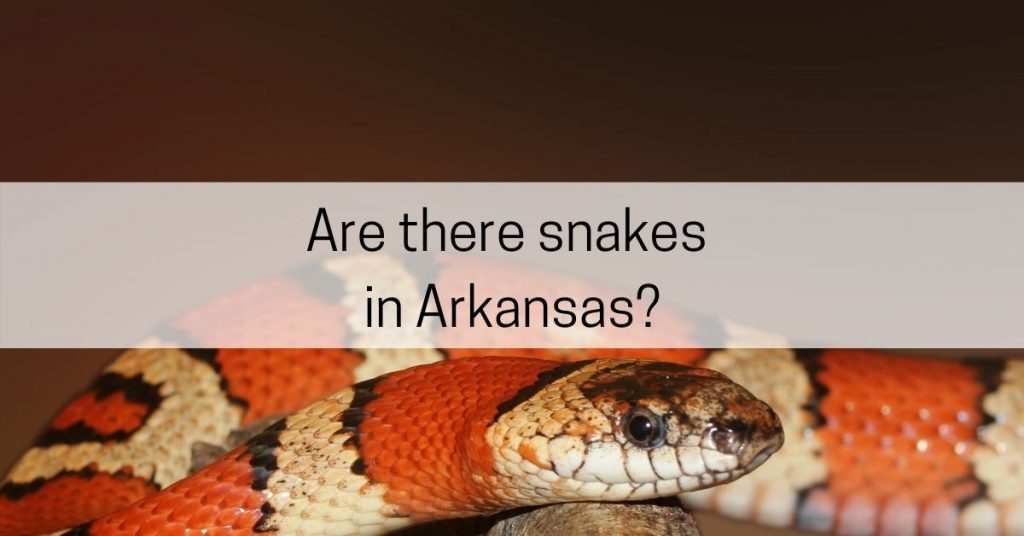In short, yes. There are snakes in Arkansas. However, there is no need to be afraid of them.
Several years ago, we bought 5 acres in the woods of Central Arkansas. We built our dream home on this land and I was thrilled to finally live “in the country.”
However, I was raised in the suburbs and things are different out here in the country!
Besides the quietness, space to roam, and fresh air, we also have snakes, tarantulas, and scorpions.
Don’t get me wrong. We also have pleasant things like deer, rabbits, bald eagles, ducks, and tortoises but the “ugly” things are what gave me the creeps.
After several years of living out here, I have finally learned to not be afraid. Well, mostly. I may never get over my fear of tarantulas and scorpions but I’m no longer afraid of snakes.
Why? One word: education.
My husband and I have spent these last several years teaching ourselves and our children about the snakes that live around us here in Central Arkansas. These snakes aren’t knocking on our door to harm us. They want to live their lives in peace just like we do.
We just have to learn how to do that together without losing our minds!
We were outside today when our 8-year-old daughter came running up to us to inform us that there was a snake by our storage building. We went over to find a black snake slithering up into a nearby cedar tree.
After consulting our Arkansas Snake Book, we discovered that it was a nonvenomous North American Racer.
The North American Racer is a long, skinny, fast snake. It is one of a few common, larger “black snakes” found in Arkansas. Although there is some variation in each subspecies, the general dorsal coloration of an adult is typically solid black. -source
Once we knew it was nonvenomous, we enjoyed watching him in our tree!
A few days ago, my husband was sitting on a park bench we have out in our woods. We have raked away the leaves and made a nice little sitting area out there. It’s a beautiful place to collect your thoughts.
As he was sitting there, he looked down just in time to see a 3ft Speckled King Snake pass by. We have a lot of King snakes out here so we are quite familiar with them.
They are beautiful to watch so we keep our distance and leave them alone. This particular King Snake was on his way to a pile of limbs we have near our fire pit.
Before summer hits, we need to clean that area up so it doesn’t attract more snakes near where we play!
The Speckled King Snake is black with yellow spots. The scales are smooth. Perfectly patterned adults will have a single yellow dot on each dorsal body scale. The belly is checkered boldly with black and bright yellow blocks. -source
By now, you’re probably thinking that Arkansans are crazy for not moving somewhere else but I don’t think there are too many places you could go to avoid snakes. The only place I can think of would be in the cities or suburbs and that just doesn’t interest me at all.
Being educated about the snakes in Arkansas is the key to sanity.
A few days ago, my husband and our daughter were moving rocks away from the edge of the woods so we can mow there this summer. We have taught our daughter to be very careful when picking up rocks because you never know what might be living under them.
One rock just happened to have a Ring-necked Snake living under it.
This species is very small; rarely exceeding 30cm (12in) in length. One of the most distinguishing features is the brightly colored orange, yellow, or red ring around the neck. The underside is very brightly colored with orange, yellow, or red. This species can be found pretty much anywhere in the state where there is protective cover: loose soil, leaf litter, rotten logs, rocks, debris, etc. -source
Ring-necked Snakes like to eat salamanders and earthworms, and not humans, so there is no need to be afraid.
Cautious? Yes. Afraid? No.
Arkansas is home to venomous snakes like the Copperhead, Cottonmouth, types of Rattlesnakes, and Texas Coral Snake.
Thankfully, the only venomous snake we have encountered here in Central Arkansas is the Copperhead.
This medium-sized venomous snake is identified by its strong, hourglass-shaped dark cross-bands. The head may have a distinctive copperish color, thus the name “Copperhead”. The top of the head will also show two rather distinct dots. The tail of an adult Copperhead will be black with bright white flecks. The pupils (as with all Pit Vipers in the state) are vertical, like a cat’s. -source
When we see a Copperhead, we get out of the way.
Like all other areas of the United States, snakes live in Arkansas. The Arkansas Game and Fish Commission distributes an excellent Arkansas Snake Guide that we keep on hand at home to educate ourselves.
Snakes are very misunderstood. So many people say that the only good snake is a dead snake. This is sad and not true. Some of the nonvenomous snakes will actually eat the venomous snakes. So, if you kill every snake you see, you are actually hurting yourself.
Keep in mind that the Arkansas Game and Fish Commission states that it’s illegal to kill snakes in Arkansas unless they pose an immediate threat to people, pets or property. Simply existing on your property is not a threat.

